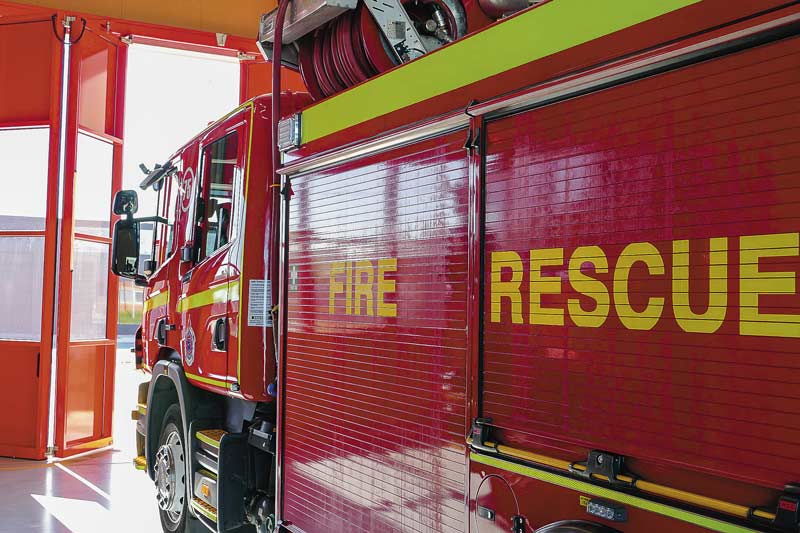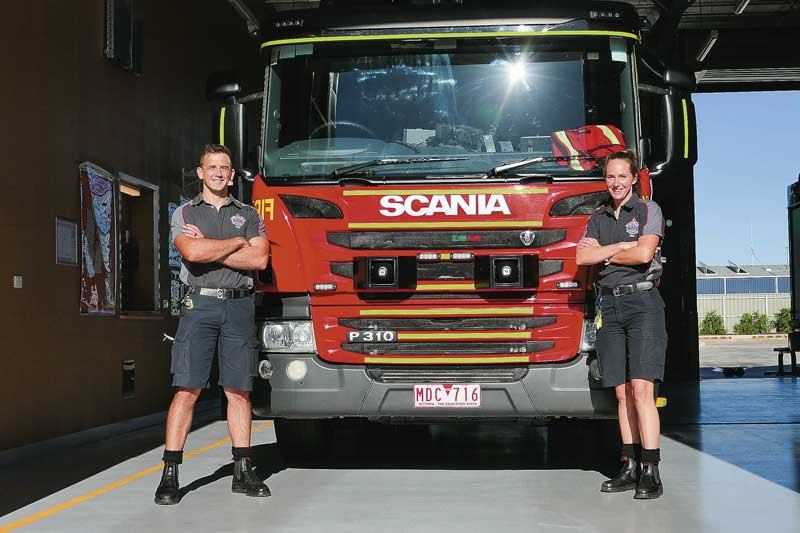
By Deanne Jeffers
THERE are five trucks maintained and housed in Fire Rescue Victoria’s (FRV) updated premises on Archer Street, Shepparton. These are a Heavy Urban Pumper, Aerial Pumper, Hazardous Materials (Hazmat) Response Unit, and two off-road Tankers, which belong to Shepparton’s CFA.
The heavy urban pumper is the red truck you’ve most likely seen driving in the district, responding to any number of emergencies. FRV’s personnel are trained to respond to a range of incidents, including fires, complex rescues, road crashes, emergency medical calls, and hazardous chemical spills.
Considered a ‘jack-of-all-trades’, the heavy urban pumper can respond in all the above events, except for chemical spills, which the hazmat response unit is purpose-built for. This vehicle includes a lift to transport toxic materials, such as pesticides or herbicides. There are only five hazmat response units in the state, and Shepparton’s travels the furthest distance than any of the other trucks on-site.
Most of the fleet are Scania trucks featuring a 5-speed automatic transmission and a 6L turbo intercool diesel engine. The hazmat response unit is a Mercedes.
Looking at the rear of the truck, the controls marked in blue control delivery of water. Unlike tankers, FRV’s fleet cannot store and require a hydrant to access water. Each number corresponds to a pipe under the truck where a hose is attached.
Each truck is kitted out with numerous canvas and reinforced rubber hoses. The reinforced hoses can deliver 6,000L of water a minute, up to three times as much as the canvas hoses, which produce 500L of water a minute.
CFA’s tankers are the only trucks with reliable off-road capability and the ability to drive while dispensing water. These are also fitted with roll cages, a heat shift to cover windows, and external sprinklers to protect against dangerous blazes. These improvements have made incredible differences in the safety of firefighters, particularly in forest and grass fires, which can change suddenly.









